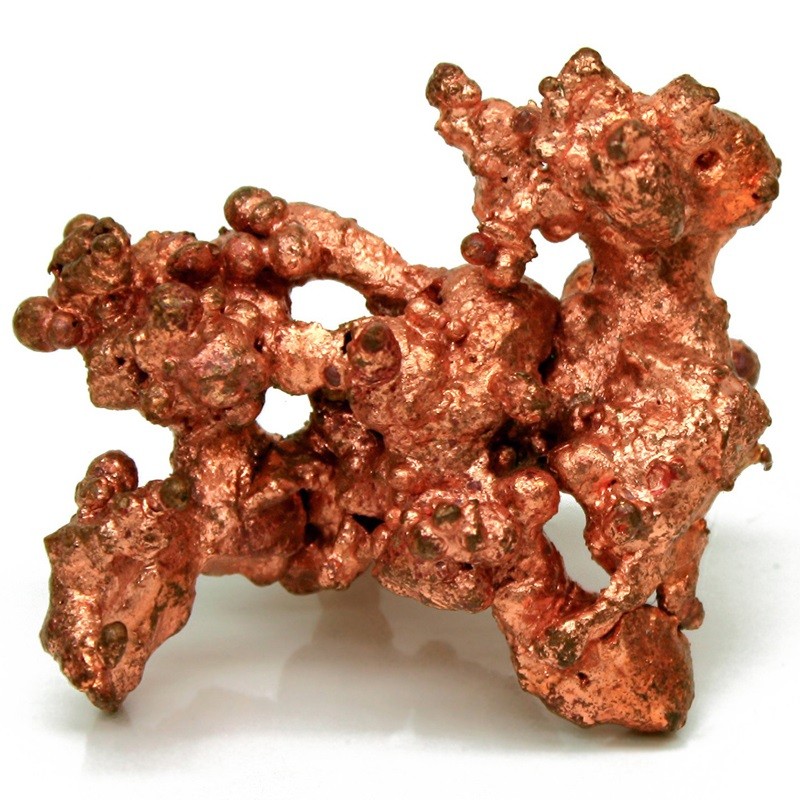Bakır
29
Cu
Grup
11
Periyot
4
Blok
d
Protonlar
Elektronlar
Nötronlar
29
29
35
Temel Özellikleri
Atom numarası
29
Atom ağırlığı
63,546
Kütle Numarası
64
Kategori
Geçiş metalleri
Renk
Bakır rengi
Radyoaktif
Hayir
From the Latin word cuprum, from the island of Cyprus
Kristal yapısı
Yüzey merkezli kübik
Tarihi
Copper occurs naturally as native copper and was known to some of the oldest civilizations on record.
Earliest estimates of the discovery of copper suggest around 9000 BC in the Middle East.
It was one of the most important materials to humans throughout the copper and bronze ages.
Earliest estimates of the discovery of copper suggest around 9000 BC in the Middle East.
It was one of the most important materials to humans throughout the copper and bronze ages.
Enerji seviyesi başına Elektronlar
2, 8, 18, 1
Elektron dizilimi
[Ar] 3d10 4s1
Pure copper is orange-red and acquires a reddish tarnish when exposed to air
Fiziksel Özellikleri
Faz
Katı
Yoğunluk
8,96 g/cm3
Ergime noktası
1357,75 K | 1084,6 °C | 1984,28 °F
Kaynama noktası
2835,15 K | 2562 °C | 4643,6 °F
Ergime ısısı
13,1 kJ/mol
Buharlaşma ısısı
300 kJ/mol
Isı kapasitesi
0,385 J/g·K
Dünya kabuğundaki bulunulabilirliği
0,0068%
Evrendeki bulunulabilirliği
6×10-6%

CAS Numarası
7440-50-8
PubChem CID Numarası
23978
Atom Özellikleri
Atom yarıçapı
128 pm
Kovalent yarıçapı
132 pm
Elektronegatifliği
1,9 (Pauling ölçeği)
İyonlaşma enerjisi
7,7264 eV
Atomik Hacim
7,1 cm3/mol
Isıl iletkenlik
4,01 W/cm·K
Yükseltgenme seviyeleri
1, 2, 3, 4
Uygulamalar
Copper is often used for electrical wiring applications and for household plumbing applications.
Copper sulfate is used as a fungicide and as an algicide in rivers, lakes and ponds.
It is also used in cookware and cooking utensils.
Commercially important alloys such as brass and bronze are made with copper and other metals.
Copper sulfate is used as a fungicide and as an algicide in rivers, lakes and ponds.
It is also used in cookware and cooking utensils.
Commercially important alloys such as brass and bronze are made with copper and other metals.
Cooking acidic food in copper pots can cause toxicity
İzotoplar
Kararlı izotoplar
63Cu, 65CuKararsız izotoplar
52Cu, 53Cu, 54Cu, 55Cu, 56Cu, 57Cu, 58Cu, 59Cu, 60Cu, 61Cu, 62Cu, 64Cu, 66Cu, 67Cu, 68Cu, 69Cu, 70Cu, 71Cu, 72Cu, 73Cu, 74Cu, 75Cu, 76Cu, 77Cu, 78Cu, 79Cu, 80Cu